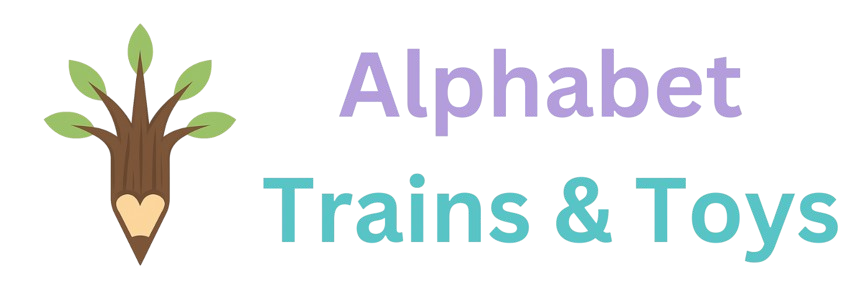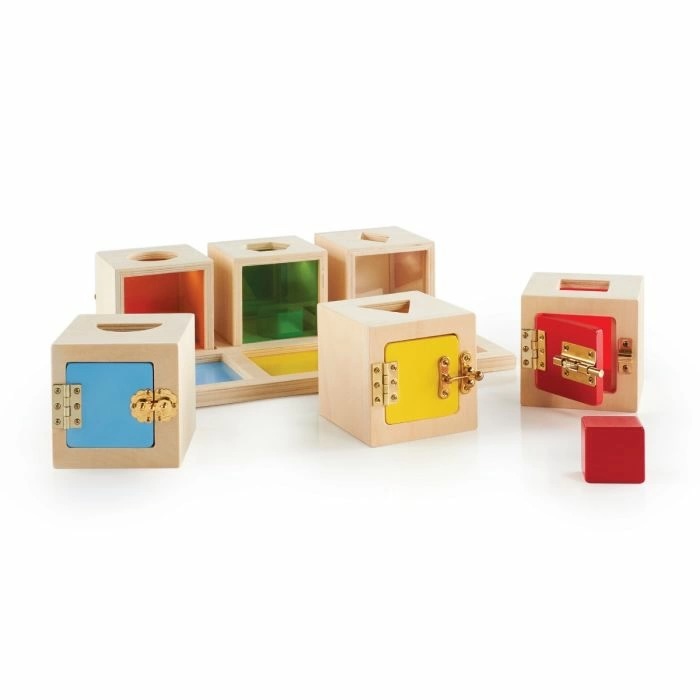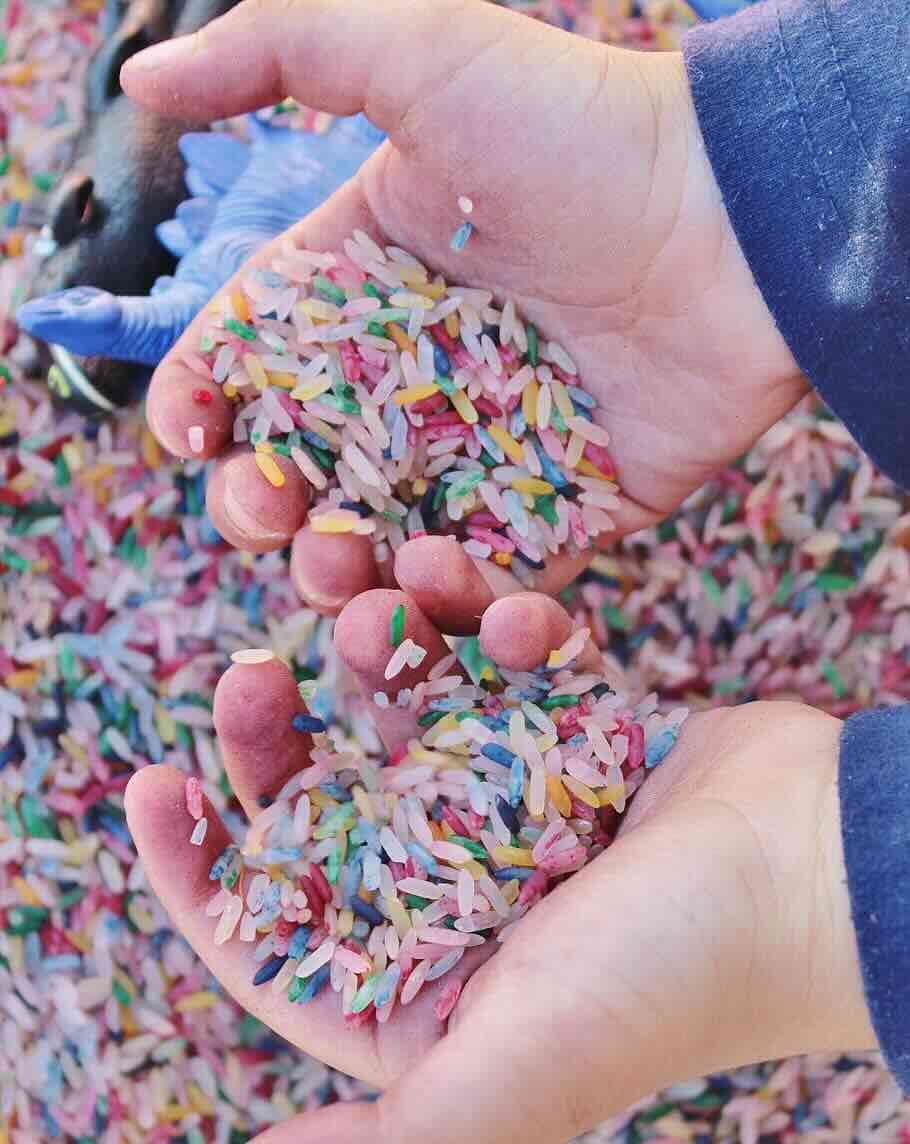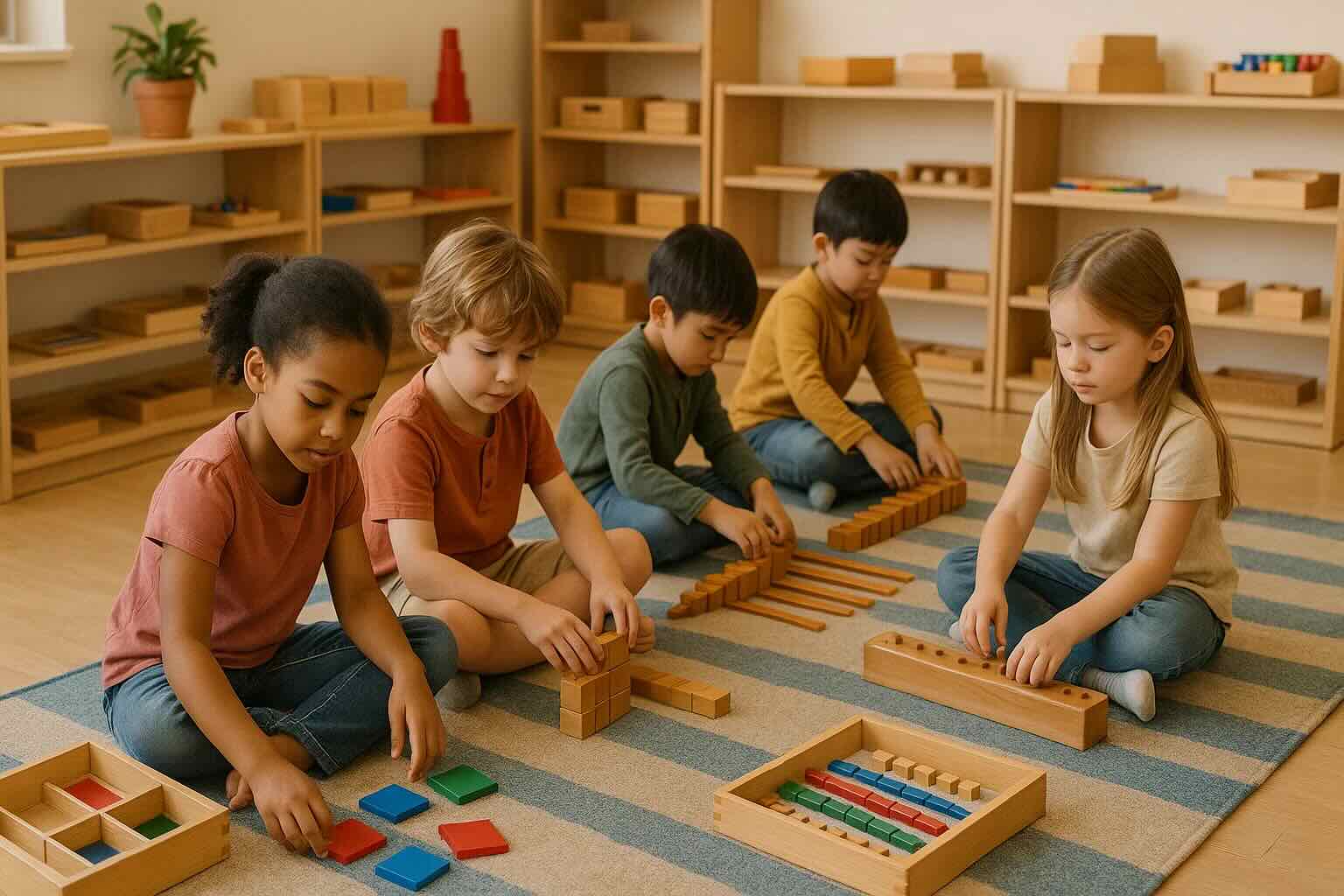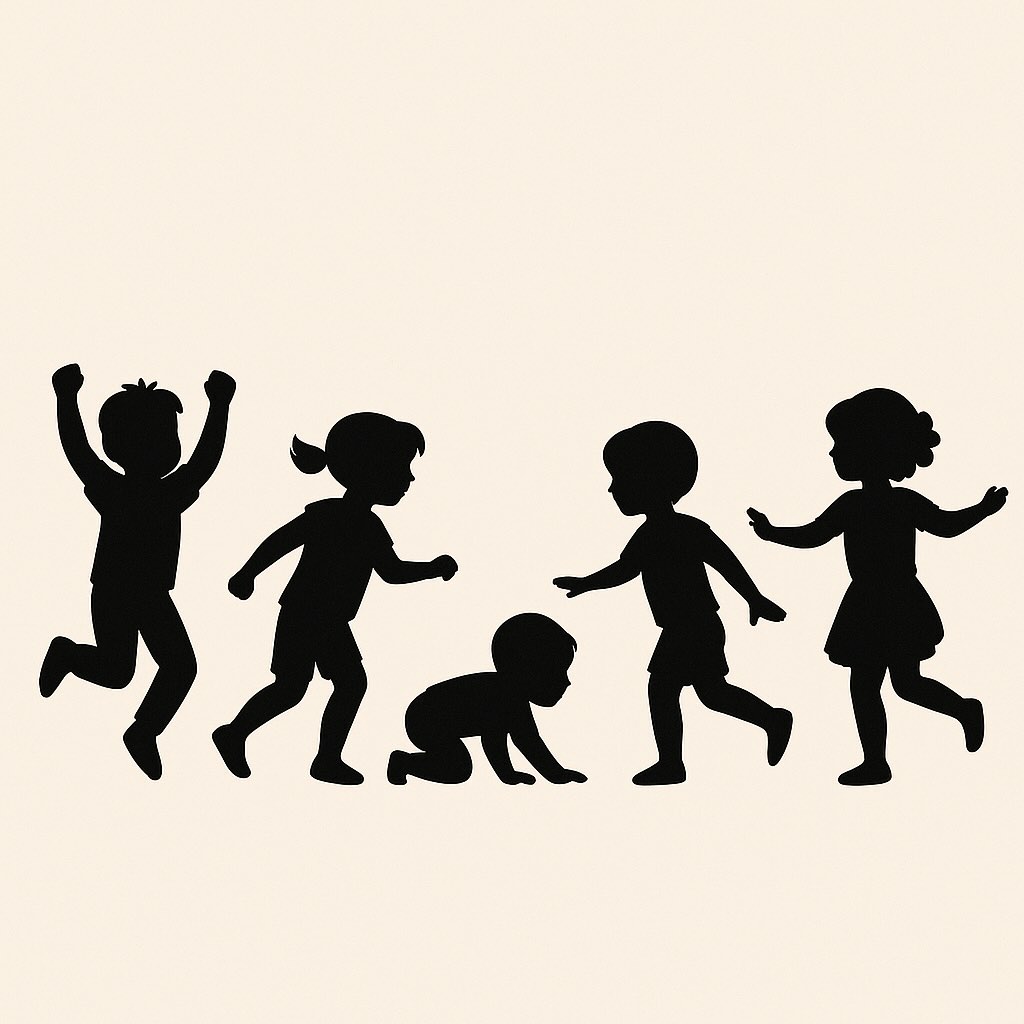During the pandemic, as both a Montessori educator and parent, I found myself overwhelmed trying to recreate the calm, purposeful structure of my child’s preschool at home. Our days felt chaotic, and my then 3-year-old craved the independence and rhythm he was used to. That’s when I began building a simple Montessori-inspired summer structure—one that balanced routine with freedom, and allowed my child to continue growing joyfully. When my sister visited and saw how my nanny and I had set it up, she asked me to help her guide her own caregiver using the same approach. This article shares everything we created together—so your home can be a nurturing Montessori space all summer long.
Summer break is just around the corner, and for families with young children in Montessori programs, it’s natural to want to maintain the rhythm, values, and independence fostered during the school year. If your 3.5-year-old is leaving Montessori preschool for the summer and will be home with a nanny and a younger sibling, you might be wondering: How can we maintain structure and foster independence without making summer feel rigid or overly scheduled?
The answer lies in creating a Montessori summer program. A flexible, child-centered framework that supports independence, practical life skills, and joyful exploration.
🙌 Need a summer-friendly Montessori routine? Download our printable daily rhythm chart from this guide on preparing a Montessori environment.
In this article, we’ll walk through:
- Why structure matters in early childhood (even in summer)
- What a Montessori-aligned daily rhythm looks like
- Sample schedules for a 3.5-year-old and a 1-year-old
- How to implement a daily work cycle at home
- Ideas for quiet time, skill practice, and outdoor play
- How to support your nanny in following Montessori principles
Need more activity ideas tailored to your child's age? Visit our guide to Montessori activities by age for curated ideas from toddler to elementary years.
Why Structure Matters—Even in Summer
One of the most beautiful aspects of Montessori education is its emphasis on routine and consistency, which helps children feel secure and confident in their environment. This core idea is at the heart of the method—if you’re new to Montessori, our overview of Montessori education and philosophy offers helpful context. This doesn’t mean your summer days need to be scheduled to the minute, but children thrive when there’s predictability and purpose to their day.
Structure doesn’t stifle independence—it supports it.
Children are more likely to engage deeply in independent play or meaningful work when they understand what to expect. A loose daily rhythm anchored by recurring activities like a morning work cycle, outdoor time, meals, rest, and quiet play for toddlers or preschoolers provides the balance of freedom and order that Maria Montessori emphasized.
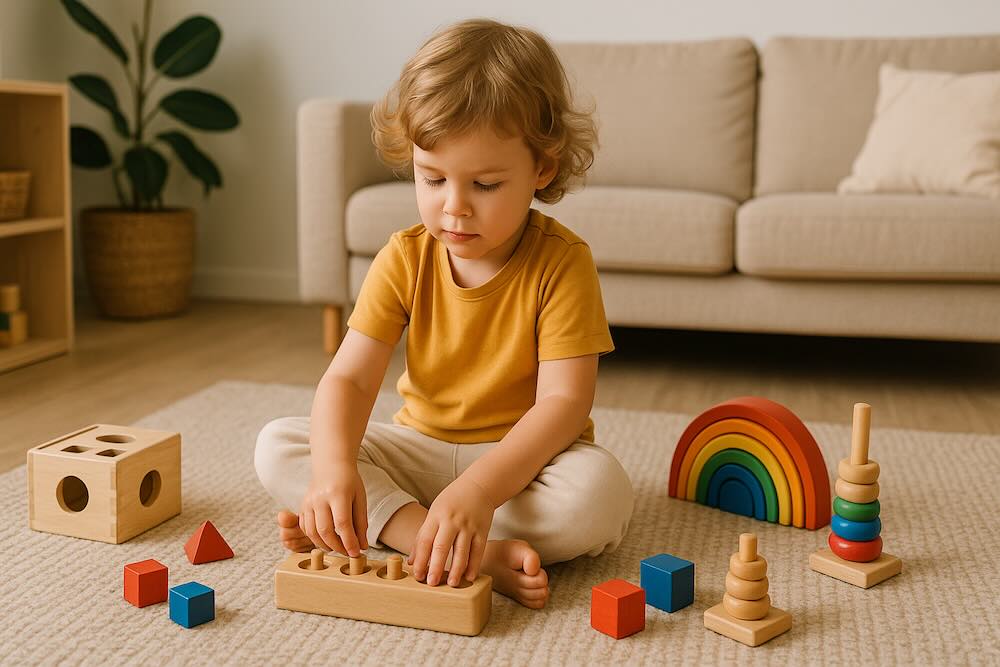
Designing a Montessori-Aligned Daily Rhythm
A flexible, Montessori-style daily schedule should flow with your child’s natural energy patterns and needs, while including key components that support development:
- Uninterrupted work time (work cycle)
- Practical life activities
- Outdoor exploration and gross motor movement
- Quiet time or rest
- Read-aloud or independent reading time
- Care of the environment and self
- Grace and courtesy practice
📅 Planning tip: Try using color-coded cards to represent parts of the day—this helps preschoolers anticipate transitions and feel in control.
Sample Montessori Summer Program
- 7:00–8:00 AM – Wake up and family time
Gentle morning routine (toilet, dressing, breakfast with family) - 8:00–9:00 AM – Free play & practical life
Child-led activities like watering plants, feeding pets, helping with breakfast cleanup - 9:00–10:30 AM – Morning work cycle
Uninterrupted independent activity time with Montessori materials, puzzles, books, or open-ended toys.For tips on choosing developmentally appropriate toys that align with Montessori principles, see our Ultimate Guide to Montessori Toys.
- 10:30–11:30 AM – Outdoor time
Nature walk, water play, or backyard gross motor activities - 11:30–12:00 PM – Lunch prep and lunch
Children can help with table setting, pouring water, serving food - 12:00–1:30 PM – Quiet time / Nap time
- 1:30–3:00 PM – Creative exploration or practical life
Art, baking, cleaning windows, folding laundry—guided but open-ended - 3:00–4:00 PM – Second outdoor session
- 4:00–5:00 PM – Storytime, music, winding down
🎶 Need activity inspiration? Explore these toddler-friendly Montessori activities that can be adapted for toddlers too.
The Work Cycle at Home
The Montessori work cycle or independent activity period is a cornerstone of the classroom. At home, it can be adapted by setting aside 60–90 minutes in the morning when your child is free to choose activities independently, ideally from a prepared set of materials on low shelves.
Tips for a Successful Home Independent Activity Period:
- Create a prepared environment with baskets or shelves of rotating activities
- Allow for uninterrupted time—resist jumping in unless needed
- Quietly observe and take notes on interests or struggles
- Encourage returning materials to their place
Work Choices for a 3.5-Year-Old:
- Pouring or transferring with tongs
- Cutting practice
- Sandpaper letters or sound matching
- Flower arranging, polishing, window cleaning
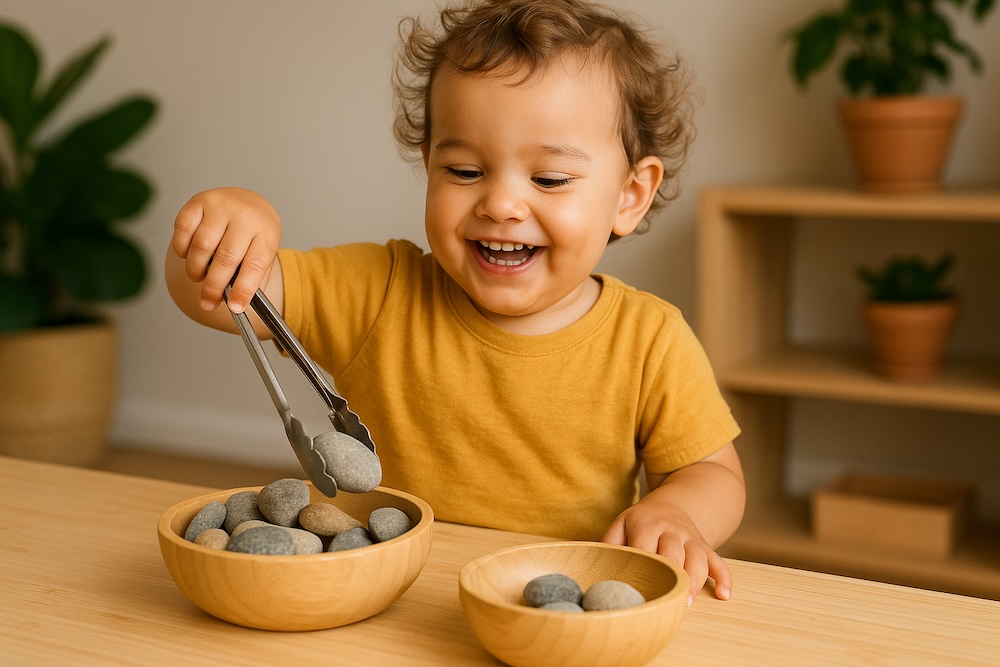
For a 1-Year-Old:
- Object permanence boxes
- Simple stacking or posting activities
- Treasure boxes with safe, natural materials
Building Independence Through Daily Routines
Montessori isn't about cramming academic skills into the day; it’s about building the child’s ability to function confidently in the world. This means integrating your 3.5-year-old into real tasks.
Practical Life Skills to Practice:
- Dressing and undressing
- Preparing snacks
- Folding laundry, sweeping
- Personal hygiene tasks with independence
🧯 Want to support practical life skills? Set up a small shelf or basket at home with simple tools like a sponge, cup, or towel your child can use independently for real tasks like wiping a spill or pouring water.
Quiet Time and Reading
Children in Montessori environments are given time for reflection and solitude. At home, daily quiet time after lunch provides the chance to recharge.
Ideas for Quiet Time:
- Looking at books in a cozy nook
- Drawing with pencils or crayons
- Listening to audiobooks or classical music
Outdoor Play as Essential Work
Montessori emphasized the importance of connecting children with nature. Outdoor time should be viewed not as a break from learning, but an essential part of the child’s work.
Outdoor Activities:
- Nature collecting and sorting
- Helping in the garden
- Washing outdoor toys
- Building with sticks, rocks, and other found objects
🌳 Need ideas for gross motor play? Read our blog on Montessori vs Waldorf for more movement-based inspiration.
Supporting the Nanny with Montessori Principles
My sister, after seeing our summer routine, was inspired to instruct her nanny with the same structure. Here’s how to support a caregiver in offering Montessori at home:
- Set up the environment together—baskets, toy rotation, snack stations
- Share sample schedules and work cycle ideas
- Model respectful observation and minimal adult interference
- Emphasize consistency in tone, expectations, and language
If you’d like to apply these same principles beyond caregiving, explore our guide to Montessori parenting style to bring consistency into your whole household.
In summary: A Montessori summer program at home doesn’t need to be complex. By focusing on a consistent daily rhythm, practical life skills, child-led activities, and outdoor exploration, you’re giving your child a summer rooted in independence, confidence, and joyful learning—core values of Montessori philosophy.
These are just a few of the core Montessori principles that make this approach so impactful—especially when applied intentionally during summer.
💬 Empower your caregiver: Encourage your nanny to observe instead of instruct. Silent observation reveals what truly interests your child.
Want to bring these ideas into your overall family life? Explore our approach to Montessori parenting style for everyday consistency at home.
Keep it simple, observe often, and allow space for wonder.
❓ Montessori Summer Program at Home: FAQ
How do I create a Montessori summer routine at home?
A Montessori summer routine should balance freedom and structure. Focus on a loose daily rhythm that includes uninterrupted work time, practical life activities, outdoor exploration, quiet time, and rest.
What is the Montessori work cycle and how do I implement it at home?
The Montessori work cycle is a 60–90 minute period of focused, self-directed activity. At home, prepare a shelf of simple materials your child can choose from independently, and allow uninterrupted time each morning to explore them.
How can a nanny follow a Montessori summer program?
Support your nanny by modeling respectful observation, sharing a clear daily rhythm, and preparing the environment with practical life and sensory activities. Consistency and trust in the child are key.
What are good Montessori summer activities for toddlers?
Great Montessori-aligned summer activities include watering plants, nature walks, sorting leaves or stones, transferring objects with spoons or tongs, and snack preparation. Focus on real, hands-on tasks that build independence.
Can Montessori be practiced with multiple children of different ages?
Yes, Montessori works well in mixed-age settings. Provide age-appropriate materials for each child and encourage older children to model routines or help prepare activities. Maintain a consistent rhythm and calm tone across ages.
